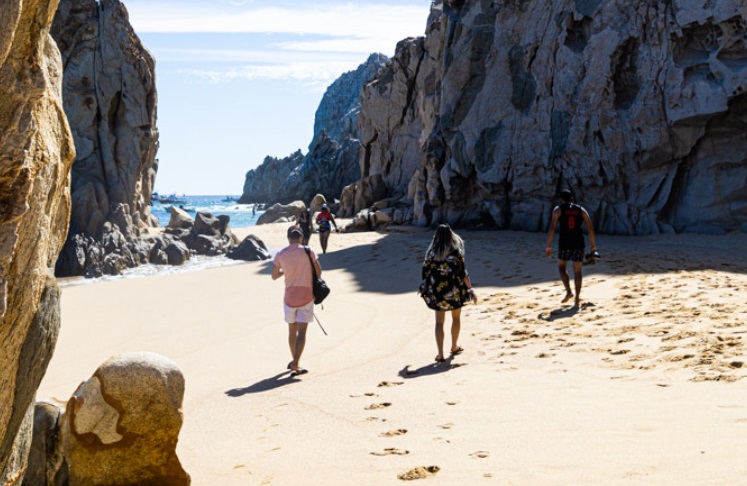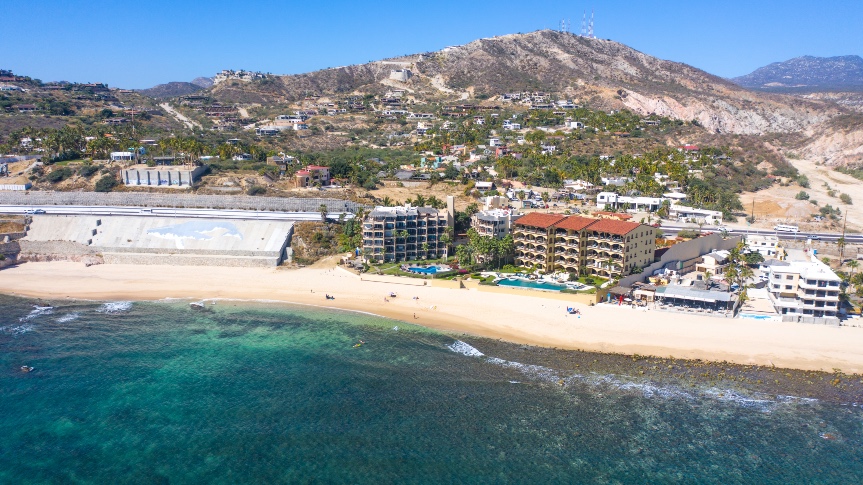What is the History of Baja California?

Are you coming to Baja California for a vacation packed with fun and adventure? Whether you’re staying in Cabo San Lucas or San José del Cabo, we can pick you up and take you anywhere in Los Cabos.
Our team is full of genuine locals who live here and love this place – and we want visitors to get even more out of their time in the area, both on land and at sea!
In the ocean, you can join us for surfing lessons at Costa Azul, guided snorkel tours and paddleboarding in Los Cabos.
On land, we offer off-road jeep tours, hiking in Fox Canyon and more.
After learning the history of Baja California, join us to experience all the wonders and natural beauty it has to offer today through our group and private tours in Los Cabos.
If you have any questions about our tours and activities, please don’t hesitate to get in touch.

Where is Baja California?
Before diving into the history of Baja California, let’s orient ourselves. Put simply, Baja California is the long peninsula running south of California in the United States, and parallel with the Mexican mainland.
It has an approximate length of 760 miles (around 1,220 kilometers), making it the second-longest peninsula in the world, behind only the Malay Peninsula.
To the east is the Gulf of California (or Sea of Cortés), while the Pacific Ocean lies to the west.
Given its location, the peninsula is renowned for its unrivaled cuisine and countless beautiful locations. And there are just as many reasons to visit Baja California; so what’s yours?
Exploring the Early History of Baja California
Before the Spanish arrived in the 16th century, three major ethnic groups inhabited Baja California. In the north were the Cochimí, while the Pericú lived on the southern cape. Between the two, in the central section, were the Guaycura.
Archaeological artifacts found in the region suggest that these three tribes occupied the peninsula of Baja California, and Cedros Island, as far back as 9,000 to 10,000 years ago.
In the north, the Cochimí primarily lived on the mainland and were hunters and gatherers. However, a small, isolated group of Cochimí settled on Cedros Island. There, they developed a complex system of agriculture for the time.
In the center and south of the peninsula, both the Guaycura and Pericú sustained themselves through fishing, hunting, and gathering. Today, their descendants still live in the north of Baja California.

What Happened in Baja California After the Spanish Conquest?
Much of Spain’s interest in the Americas focused on a search for gold and other riches. This led them from the American mainland into Mexico.
After conquering the Mexican mainland, the Spanish turned their attention westward, primarily to look for a fabled island of gold. In 1532, Hernán Cortés, a conquistador, dispatched two fleets of ships to locate the island.
When this expedition failed, Cortés decided to lead another expedition himself. His group landed near the southern tip of Baja California, to the north of La Paz. While they found black pearls, there wasn’t any gold.
A later Spanish expedition, in 1539, sailed the entire length of the Gulf of California. It was at this point that the Spanish discovered that Baja California was a peninsula.
Ultimately, Baja California wasn’t fully explored or colonized at this time, and Spanish interest in the area declined for a few decades.

But it revived again when trade between Mexico and the Philippines, both controlled by Spain, grew toward the end of the 16th century.
It became clear that a supply station on Baja California’s western coast would make a welcome refuge for ships completing the long, arduous journey across the Pacific.
Starting in 1592, multiple expeditions into Baja California attempted to establish this station. But they were unsuccessful in the face of native resistance. It wasn’t until 1730, some 138 years later, that the Spanish finally set up the supply station.
Before this, however, the Spanish government finally issued a mandate to colonize the peninsula in 1683. La Paz was again the site of arrival. Here, the Spanish attempted to establish their first settlement, but hostility from local tribes forced them out of the area.
A second attempt at creating a settlement failed for this same reason, so Spanish attention again returned to the mainland.
The first permanent Spanish settlement in Baja California didn’t come until 1695, when a Jesuit priest established the Misión Nuestra Señora de Loreto.
Its success quickly turned Loreto into the peninsula’s administrative and religious capital. As many as 23 new missions sprang up in the following 70 years.
By 1810, the independence movement in Mexico had begun. When Mexico finally became an independent nation in 1821, the government established Baja California as a federal territory.
The History of Baja California Following Mexican Independence
The Mexican-American War (1846 to 1848) started when Mexico refused an offer from the United States to purchase California, as well as Nevada, Utah and parts of Arizona, Colorado, New Mexico, and Wyoming.. This had major consequences for Baja California.
The war ended with a treaty, and Mexico ultimately ceded a huge amount of its territory for $15m. The original version of the treaty included Baja California as part of the exchange.
Eventually, the US agreed to exclude the peninsula from the sale due to its proximity to the Mexican state of Sonora.
However, this didn’t stop the American William Walker invading Baja California with 50 mercenaries. Without support from the US government, he planned to annex the peninsula for the United States. Ultimately, he failed.
Baja California then played a key role in the Mexican Revolution. It was here that the Partido Liberal Mexicano (Liberal Mexican Party) organized a rebellion against the dictator Porfirio Díaz in 1911.
The rebel army took control of two key locations in the north of Baja California, Mexicali and Tijuana. Their success and growing credibility encouraged rebel forces elsewhere to join the fight.
December 31st of 1952 is a key date in the history of Baja California. On this day, the peninsula became Mexico’s 29th state. The adoption of the state’s constitution followed in 1953.
The Baja California You Can Visit Today
In modern day Baja California, the economy relies on agriculture, manufacturing, mining, and tourism. Of course, the team at High Tide Los Cabos is proud to be a leading name in the latter.
With beautiful sandy beaches, warm turquoise waters, and all kinds of activities and adventures to jump into, we welcome tourists from all over the world. And don’t forget our world-renowned food and drink!

Make Your Time in Baja California Unforgettable with Our Tours and Activities
Are you ready for some fun in the sun? With our Los Cabos adventure tours and activities, you can explore on land and by sea. Whatever your preferences, we’ll help you get the most out of your vacation.
The Baja Peninsula offers something for everyone… and we’re here to help you discover it all!
If you want maximum personal attention from your guide, not to mention full control over your group size and all-round flexibility, our private tours in Los Cabos tick every box.
If you don’t mind being part of a slightly larger group, check out our range of group adventure tours!
Please note, if you’re interested in learning to surf, our Costa Azul experience runs from March to November, while Cerritos surfing takes place from November to March.
If you have any questions about our tours and activities, please contact us.